Way too often, the program design section of a grant gets less attention than it should. A lot of grant writers think, “if I get the grant, I’ll design the program/add more detail to it.”
Unfortunately, that’s not the grantmaker’s expectation. They expect the design to be thoroughly planned before your grant request is submitted, unless you’re applying for a planning grant, of course.
This doesn’t mean your program design is set in stone as soon as you hit “submit,” but that you have thought through your goals, how the program strategies will accomplish your goals, and which resources you’ll need to make it all work.
Here’s how to evaluate your program design and make the improvements that will get your work funded.
I recommend starting with the big idea and working backwards to figure out how you will get there. So start with the outputs and then determine which inputs you need to make those outputs a reality.
Goals and/or Objectives
I know it can seem impossible to set and achieve goals when you’re just trying to get funding to survive the rest of the year. But this is what grantmakers continue to ask for, and I understand why. They require goals from their grantees so they can point to something finite that is being accomplished with their money.
You can choose from different goal or objective setting strategies, but grantmakers generally just want something that looks like a SMART goal. I know, I know, SMART goals seem pretty hackneyed at this point, but let’s focus on the specific, measurable, and time-bound elements of the acronym.
Take the goal of feeding the food insecure in your community. How do you “make it smart”?
Specific: Who are you feeding? Children ages 5-12 in your town of Norman, Oklahoma? Ok, great.
Measurable: How many are you feeding? 100 children? How many meals per day? 1 meal per day. Check!
Time-bound: In what period of time will you feed these 100 children? Every day for 1 year. Done!
There’s your new SMART goal or objective. The relevant and attainable parts you probably already know and don’t need to include in the written out version of your goal.
Relevant: (Do these kids need food? Yes! Perfect.)
Attainable: (Will you have the resources and ability to actually feed that many? Yes? Ok.)
Now that you know exactly what you’re aiming for, you have to figure out how to make it happen.
Strategies
Part of designing a program is breaking your big goal, like “feed 100 kids ages 5-12 one meal per day in the next year,” into strategies or activities.
This step shows the grantmaker you’ve thought through the monthly, weekly, and even daily tasks you need to complete to accomplish your goal.
If this is a new program there is probably quite a bit of planning and organization your nonprofit will do before feeding your first child.
For example, you’ll have to figure out a menu, where the food is coming from, who is preparing the food, whether you need food preparation licenses, where the food will be prepared, how you will distribute it, how you will advertise this program, how you will determine who can receive the food, and the list goes on.
Then you need to list the activities that will take place to implement the program: hiring staff, training staff, running the kitchen, etc.
Run this list by someone else to check that there isn’t an activity missing.
Budget
People usually think of the program design and the budget as two completely separate parts of a grant proposal. But, the reality is that they are very closely related and should speak to each other.
If the mention of the budget has you shuddering, fear not! Doing the work of designing a solid program will help the budget fall right into place.
Now that you’ve listed SMART goals and detailed strategies or activities, you can link each one of those activities directly to an expense.
The easiest way to make sure you don’t miss any activity expenses is to either create a table or use a spreadsheet. In the left-hand column, list every activity. In the right-hand column, list every expense that corresponds to that activity.
Here’s an example:
| Activity | Expense(s) |
| Plan a menu | Nutritionist consulting fee |
| Cook 1 meal per day for 100 kids | Salary and benefits for 2 cooks for 52 weeks Kitchen rental for one year Cafeteria rental for one year Cooking supplies and food for 1 year |
| Advertise this program | Marketing consultant fee Paper Printing Digital ad fees Newspaper ad fees |
Then your next step is to get quotes for each of those expenses and add it to your program budget. If the grant application asks for a budget justification, all you have to do is explain how those expenses relate back to the activity you’ve already identified.
For example, the marketing consultant will design the print and digital advertisements for the program. The newspaper ads will allow us to advertise the program to a readership of 50,000. The paper and printing expenses will allow us to print 100 flyers to post on community bulletin boards around the city throughout the year, and the digital ads will allow us to reach an even broader audience than the printed flyers and newspaper ads, approximately 100,000 people per month.
So what do you think? Do you think your program design could use some improvement? Do you need help with figuring all of this out for your nonprofit?
If you do and you’re ready to learn the skills and strategies to get the funding you deserve, check out our comprehensive online grant writing course, Grant Writing Made Easy.







Valerie Hill
August 5, 2020 9:08 amMost grants are for existing organizations do you have grant information on start businesses